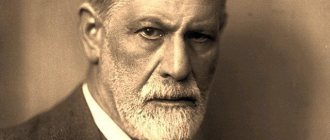Theory X
Theory Y
In the middle of the last decade, sciences such as social psychology and sociology developed intensively. The tools and practical data from these areas began to be used in management.
Biobehaviorism is the science of human behavior.
The behaviorist direction in management is a school of behavioral sciences, the ideas of which are based on the use of sociological and psychological tools to increase the efficiency of organizational processes.
The concept under consideration is based on the statement that an employee must constantly develop. Its effectiveness is largely determined by behavioral characteristics, mental and emotional state, as well as communications and a complex system of group relationships within the organization.
Now the ideas of the science under consideration have become an integral part of many areas of management and have served as the basis for conceptual theories of leadership and motivation, communication and power of company organizational structures.
Among the key representatives of the school of biobehaviorism:
- K. Argyris;
- D. McGregor;
- R. Likert;
- F. Herzberg.
Each concept of the school of science in question is based on two key theories that were developed in the early fifties of the last century by an expert in the field of social psychology from the USA, Douglas McGregor. He called them theories X and Y. The psychologist believed that management should be based on that or some other theory. At the same time, X-theory is fully consistent with classical schools of management, while theory Y is much more progressive and reflects current scientific trends in production management.
John Watson and his work
The first scientist to openly call himself a behaviorist was John Watson, who in 1913 published a manifesto of sorts called Psychology as the Behaviorist Sees It.
The very title of the work suggests that Watson in no way intended to create a new science, but simply believed that psychology should henceforth study behavior.
This may have been a mistake, since most psychologists of the time were of the opinion that they should study mental processes in the world of consciousness. For this reason, of course, they were not prepared to agree with Watson.
The scientists who paved the way for behaviorism spent a lot of time searching for an introspective methodology in the study of mental life, which overshadowed the centrality of their main object of study.
Watson himself made several important observations about instinctive behavior. In fact, he was one of the first modern ethologists. However, the study of the body's ability to learn impressed him so much that he somewhat exaggerated the ability of newborns to learn.
He himself later admitted that this was an exaggeration, but since then this fact has been referred to again and again to show Watson's alleged bias. The new form of science that he developed was in some ways premature because he had few scientifically reliable facts about behavior, especially human behavior.
For any new form of science there is always the problem of too little evidence. For Watson's scientific and ambitious program, which concerned such a broad area as human behavior, this fact was a very significant drawback. He needed more factual material than he could find. It is therefore not surprising that much of what he said and wrote seems naive or overly simplistic.
The scientific material of behaviorism available to Watson concerned conditioned and unconditioned reflexes. Behaviorism proposed the “stimulus-response” scheme as a unit of analysis of behavior and movement, in which a psychological phenomenon—motivation in the form of a “stimulus”—is introduced into “motor actions.” The founders of behaviorism, J.B. Watson and E. Thorndike, introduce new concepts: “stimulus-response”, “problem box”, “problem situation”, ((learning curve), “law of practice”, “law of readiness”, “ the law of associative shift and effect (reinforcement)". These concepts were equally applied by E. Thorndike to the analysis of movements, both in animals and in humans. He considered motor learning as a process of formation of movements by trial and error. Movement is described as motor act, executive reaction.
This idea also prevailed in the works of the Russian physiologist I.P. Pavlov, published around the same time. Even the "stimulus-response" psychology that developed over the next 3-4 decades did not change this view.
Of all the results he obtained, he attached the greatest importance to those that were easiest to repeat experimentally. They were mainly based on observations of animals: Pavlov's dogs and white rats by animal psychologists. In conjunction with these findings, a scientific program was developed to study ways to control behavior. It was necessary to conduct experiments aimed at identifying the patterns that form the stimulus-response relationship. This model has been extended to both animals and humans. Since the laws of learning—the formation of responses to specific stimuli—were declared universal, the data obtained from animal experiments were extended to human behavior.
Behaviorists believed that all activity could be explained using this scheme, and all concepts relating to consciousness and other manifestations of the “mental element” that were not directly observable should be banished from the realms of scientific psychology. The subject’s “consciousness” of his sensations and impressions is too subjective and completely useless for researchers. On the contrary, objective external manifestations of the same sensations and impressions - for example, in the form of changes in pupil size, pulse rate, etc. — allow us to quantify this behavior and “measure” feelings.
Key principles of behaviorism
To better understand what behaviorism is, let us formulate the main theses that clearly define it and indicate its place in modern psychology:
- The main object of study of behaviorism is behavior and reactions to external stimuli (both in humans and animals).
- The main tool for collecting information is observation.
- Behavior determines the entire life activity of a living being.
- Behavior in behaviorism is always viewed as a reaction to some external motivating factors.
- Knowing what stimuli are present, one can fairly accurately predict the response.
- The fundamental goal of behaviorism is to predict the reaction of an individual to circumstances and events.
- All types of reactions are either inherited (unconditioned reflexes) or acquired (conditioned reflexes).
Stimulus-response circuit
It was believed that human behavior is no different from the behavior of animals and is subject to the same laws. To support his claim that psychology is an exact science and to gather additional material for his book, Watson drew on the results of anatomy and psychology. Pavlov followed a similar path, arguing that his behavioral experiments were actually “studies of physiological processes in the cerebral cortex.”
But none of the scientists was able to make direct observations of processes in the nervous system that could explain human behavior. As a result, they were forced to hastily interpret complex behaviors.
For example, Watson argued that thought is a language that precedes all language; and for Pavlov, language was simply a “second signaling system.” Watson had little to say about subjective human intentions, goal setting, and creativity. He emphasized the great technical possibilities of behavioral science, but his examples were not so contradictory to manipulative control of behavior.
More than 60 years have passed since Watson published his manifesto, and a lot has happened in that time. The scientific analysis of behavior has made great progress, and the shortcomings of Watson's theory are, in my opinion, only of historical interest. The critique of behaviorism, on the other hand, has remained largely unchanged.
The uncertainty that existed in the early history of the behaviorist movement is unlikely to be a sufficient explanation for misunderstandings of this kind.
Undoubtedly, some difficulties arise from the fact that the object of study of behaviorism is human behavior, which reacts subtly to external influences. When we observe ourselves, the way we do it often leads to certain results, often with difficult consequences.
Moreover, behaviorist observation brought with it some striking changes. Some of the concepts that structure traditional forms of observation are deeply ingrained in our language. For centuries they dominated both everyday language and the language of science.
Two general ultimate goals of psychology were identified: 1) to predict behavior (response) based on the situation (stimulus) and 2) conversely, to judge a causal stimulus based on the response.
The concept of conditioned reflexes has been accepted as the scientific basis of psychological theory. It was assumed that all new responses are acquired through conditioning. All actions are complex chains or complexes of reactions. Pavlov's work allowed Watson to provide an objective explanation for the development of skills or the emergence of new forms of behavior as a result of conditioning - the formation of conditioned reflexes.
But from the S - R diagram it is impossible to understand how new actions arise, because the body initially has only a limited set of innate unconditioned reactions. Thus, according to the scheme of conditioned reactions, no stimuli or combinations thereof can lead to, for example, a dog learning to walk on its hind legs. Therefore, the extreme limitations of this scheme for explaining behavior were discovered quite early. In general, S and R have such complex and varied relationships that a direct connection between them defies comprehension. Experimental practice did not confirm the generality of the proposed scheme, and the question arose whether there is something that determines the response in addition to the stimulus - interacting with it.
If we consider the further development of the behaviorist direction in the study of personality, we will see that adherents of this direction, not satisfied with the experimental results obtained, introduce new variables (various cognitive and motivational factors), principles of learning and needs and try to explain human behavior, denying the importance and influence consciousness and a person’s ability to control it. Due to the methodological imperfections of the original concept of behaviorism, already in the 1920s it began to disintegrate into a number of directions, combining the main doctrine with elements of other theories - in particular, Gestalt psychology and later psychoanalysis. The result was neo-behaviorism.
However, it would be unfair to accuse critics of behaviorism of failing to free themselves from historical prejudices. After all, there must be other reasons why behaviorism as a theory of behavioral science is still associated with strong misconceptions.
In my opinion, there is an explanation for this: this science is misunderstood. There are a number of behavioral sciences. Some of them define their field without touching on the main themes of behaviorism.
The above criticism is perhaps best applied to a specific discipline that can be called experimental behavioral science. It studies the behavior of individual organisms in carefully protected environments and, based on this study, determines the relationship between specific behavior and the environment.
Unfortunately, this form of behavior analysis has become very little known. Its main representatives, and there are hundreds of them, rarely give in to the desire to explain themselves to the public interested in science.
Moreover, the importance of behaviorism is undeniable. The pressing problems facing the world today can only be solved if we continually expand our understanding of human behavior. I believe it is unwise to abandon traditional theories that have stood the test of time. They are the main culprits of our current situation. Behaviorism may offer a promising alternative.
The main advantages of behaviorism are as follows:
- he introduced a strong natural science bias into psychology;
- he introduced an objective method based on recording and analysis of externally observed facts, processes and events, as a result of which instrumental methods for studying mental processes quickly developed;
- the class of objects being studied has expanded enormously, the behavior of animals, infants, etc. has become intensively studied;
- his work has decisively advanced certain areas of psychology, including problems of learning, skill formation, etc.
I share the opinion of researchers who believe that the main drawback of behaviorism is that it underestimates the complexity of mental activity, it confuses the psyche of animals and humans too much, ignores the processes of consciousness, higher forms of learning, creativity, personal self-determination, and so on.
The essence of Theory X
Most employees avoid work in every possible way due to an innate dislike of it. They are not ambitious, do not want to take responsibility for getting the job done, and prefer to be managed. For such employees, safety is the highest value - it is this that motivates them to work in order to maintain their stable job.
Finished works on a similar topic
Course work The direction of behaviorism in management and its representatives 490 ₽ Essay The direction of behaviorism in management and its representatives 230 ₽ Test work The direction of behaviorism in management and its representatives 240 ₽
Receive completed work or specialist advice on your educational project Find out the cost
According to Theory X, management must be tight to ensure that work gets done. The main goal of management is coercion of labor. As part of this work organization, management must threaten employees with various sanctions to ensure the decent quality of their work necessary to achieve organizational goals. Managers who act in accordance with Theory X are called autocratic managers.
Stimulus, response and their classification
From a psychological point of view, the art of teaching can be defined as the art of creating and delaying stimuli (in Russian psychological literature this concept is usually denoted by the equivalent term “stimulus”) in order to cause or prevent a particular reaction. In this definition, the word “stimulus” is used in a broad sense and means any phenomenon that has an impact on a person - a word addressed to him, a look, a sentence read, the air he breathes, etc.
The term "response" is used in the sense of a new thought, feeling, interest, physical action, or some other mental or physical state caused by that stimulus. Let us consider this in the example of education: the task of the teacher is to bring about and prevent desirable and undesirable changes in human nature, causing or preventing certain reactions. The means available to the teacher are the stimuli that can influence the student: the words, gestures and appearance of the teacher; state and environment in the classroom; textbooks used by the student; objects that the student sees; and a whole range of things and events that are influenced by the teacher. Reactions on the part of the student are a variety of thoughts, feelings and physical movements that occur in all possible combinations.
The incentives provided by the teacher for obtaining and directing student responses can be classified as follows:
- Stimuli under his direct control: the movements of the teacher (the knowledge, love and tact of the teacher, of course, are of great importance in teaching, but their real effect depends on how they are expressed in certain words, gestures and actions) - speech, gestures, facial expressions, etc.
- Incentives for indirect control:
Physical conditions at school: air, light, heat, etc.
School equipment: books, tools, manuals. The social environment of the school: the actions (including words) of the students and the spirit that guides them. Social environment: parental actions, laws, libraries, etc.
Reactions can be classified as follows:
- Physiological responses such as deeper breathing, deeper sleep, increased mobility, etc.
- Mental reactions (the term "mental reactions" is used here in a broad sense and includes the perception of objects, understanding of context, attribution of inferences, and recall of facts or association of ideas), such as making connections between a familiar stimulus and a corresponding representation; isolating one element from a complex phenomenon; or generating multiple ideas.
- mood reactions, such as attitudes of attention, interest, preference and belief towards known general states of the whole organism.
- Emotional reactions, like the connection of sympathy, love, hatred with known states.
- Responses to actions or behaviors and skills that link known behavior or movements to a known mental state.
Directions of behaviorism
Within the framework of modern behaviorism, there are quite a few independent directions, but there is no sufficiently accurate classification that would unite them all. Let's consider the most important areas:
- Methodological. This is classical behaviorism, which is based on the assertion that only external stimuli influence human behavior. He does not take thoughts and feelings into account either as cause or effect.
- Radical. This direction is based on the approach of Skinner, who considered internal events to be no less important. He believed that they also depend on external stimuli and can influence how a person perceives various circumstances.
- Theoretical. This movement also takes into account thoughts and feelings that can be observed, analyzed and even quantified thanks to modern technology.
- Psychological. This direction was founded by the American psychologist Arthur Staats as an applied science designed for practical use. In particular, psychological behaviorism is actively used in children's education, as well as in the development of modern approaches to education.










